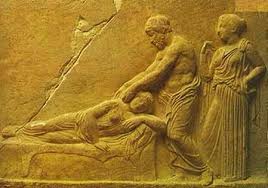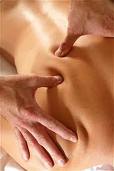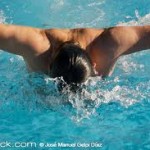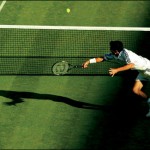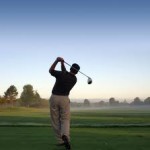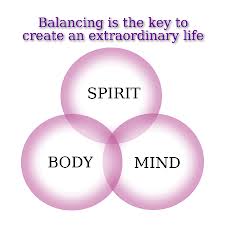Why Massage?
the three primary interrelated, interacting and integrated layers that comprise a healthy, balanced and unified human being. Body refers to the three dimensional structure and functions of the eleven systems that make up the physical body. Mind includes the thoughts, feelings and emotions (psychology) and self-awareness. Spirit, the most underlying layer of the three, is responsible for organizing, catalyzing and enlivening both the Mind and Body. It includes that aspect which senses a connection to the higher or a deeper meaning in life and the fundamental vitality that animates all human life. When one or more of these layers is out of balance due to some physical, psychological and/or spiritual reason, one is considered to be in a state of “dis-ease.” Acknowledging the body/mind/spirit connection, the massage therapy profession holds that massage therapy treatment can lead to improved health outcomes by facilitating the balance and connection of body, mind and spirit.*
Key Principles
While there are a wide variety of forms of massage and bodywork, all with their own theoretical or philosophical perspectives, there are certain basic principles they all tend to hold in common.
Circulation of Blood. Perhaps the most basic principle in this field is that improved blood circulation is beneficial for virtually all health conditions. Tension in the muscles and other soft tissues can impair circulation, resulting in a deficient supply of nutrients and inadequate removal of wastes or toxins from the tissues of the body. This in turn can lead to illness, structural and functional problems, or slower healing. Recognition of the importance of blood circulation is implicit in all forms of massage and bodywork.
Movement of Lymphatic Fluid. The lymph system is almost as extensive as that of the blood. The circulation of lymphatic fluid plays a key role in ridding the body of wastes, toxins, and pathogens. The lymph system also benefits from massage, particularly in conditions where lymphatic flow is impaired by injury or surgery (e.g., in postmastectomy women).Elliot Greene describes the process as one of breaking up the scarring that had occurred in her muscles and connective tissue or fascia between the muscles, vertebra, and ribs, all of which had become stuck together. Blood flow through the area was restored and the depression that had been palpable in her spine gradually began to diminish. The full range of motion of the spine returned.
Release of Toxins. Chronic tension or trauma to the soft tissues of the body can result in the buildup of toxic by-products of normal metabolism. Hands-on techniques help move the toxins through the body’s normal pathways of release and elimination.
Release of Tension. Chronic muscular tension as a result of high stress lifestyles, trauma, or injury can accumulate and impair the body’s structure and function. Psychological well-being is also affected. Release of tension allows greater relaxation, which has important physiological and psychological benefits.
Structure and Function Are Interdependent. The musculoskeletal structure of the body affects function and function affects structure. Both can be adversely altered by stress or trauma. Massage therapy and bodywork can help restore healthy structure and function, thereby allowing better circulation, greater ease of movement, wider range of movement, more flexibility, and the release of chronic patterns of tension.
Enhancement of All Bodily Systems. All bodily systems are affected by better circulation and more harmonious functioning of the soft tissue and musculature. Internal organ systems as well as the nervous system, the immune system, and other systems can benefit. There can be an overall improvement in the quality of life and physical health.
Mind/Body Integration. Mind and body have a reciprocal relationship. Soma (body) affects psyche (mind) and vice versa. Hence there can be somatopsychic effects, in which the conditions of the body affect the mind and emotions, and there can be psychosomatic effects, in which psychological or emotional conditions affect the body. Change in one domain may cause change in the other. A habit or fixed pattern in one may also impede change in the other and require special attention. Often psychotherapy and massage or bodywork complement each other.
Reduction of Stress. Stress is increasingly believed to induce illness, and perhaps 80 to 90 percent of all disease is stress induced. Massage therapy is an effective non-drug method for reducing stress and promoting relaxation.
Energy. Many modalities in this tradition work with the flow of energy through the body as a means to promote healing. Energy can be directed or encouraged to move through and around the body in such ways as to have impact on the physical structure and function of the body as well as on emotional well-being. This work may involve hands-on contact or may be done with no contact with the physical body.
Varieties and Techniques
There are over a hundred type of massage therapies found all over the world. Many are variations of a particular approach that is developed with its own “brand name.” Most of these techniques can be grouped into 5 categories namely: Swedish massage, Therapeutic massage, Oriental massage, Sports massage, and other special forms of massage.
Neuromuscular Therapy
Neuromuscular therapy (NMT) is a form of soft tissue manual therapy. Also called trigger point myotherapy, it is distinguished from other types of massage in that a quasi-static pressure is applied to the skin with the aim of stimulating specific areas of skeletal muscle. This comprehensive program of soft-tissue manipulation balances the body’s central nervous system with the musculoskeletal system. It is also used to locate and release spasms and hypercontraction in the tissue, eliminate trigger points that cause referred pain, rebuild the strength of injured tissues, assist venous and lymphatic flow, and restore postural alignment, proper biomechanics, and flexibility to the tissues. The American Academy of Pain Management recognizes this form of massage therapy as an effective treatment for back pain caused by soft tissue injury (such as a muscle strain).
Swedish Massage
One of the most commonly taught and well-known massage techniques, Swedish massage is a vigorous system of treatment designed to energize the body by stimulating circulation. Five basic strokes, all flowing toward the heart, are used to manipulate the soft tissues of the body. The disrobed client is covered by a sheet, with only the area being worked on exposed. Therapists use a combination of kneading, rolling, vibrational, percussive, and tapping movements, with the application of oil, to reduce friction on the skin. Its active and passive movements of the joints promote general relaxation, improve circulation and range of motion, and relieve muscle tension. The many benefits of Swedish massage may include dissolution of scar tissue adhesions, and improved circulation, which may speed healing and reduce swelling from injury.
Reflexology
Based on an ancient Chinese therapy, reflexology involves manipulation of specific reflex areas in the foot, hands, and ears that correspond to other parts of the body. Sometimes referred to as zone therapy, this bodywork involves application of pressure to these reflex zones to stimulate body organs and relieve areas of congestion. Similar to acupressure principles, reflexology works with the body’s energy flow to stimulate self-healing and maintain balance in physical function. This technique is used to reduce pain, increase relaxation, and stimulate circulation of blood and lymphatic fluids. It is especially useful in stress-related illness and emotional disorders. Reflexology is also convenient in cases where an area of the body is traumatized or diseased to the extent that direct manipulation is not appropriate.
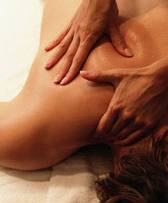 Deep Tissue Massage
Deep Tissue Massage
Techniques that utilize deep-tissue/deep-muscle massage are administered to affect the sub-layer of musculature and fascia to release chronic patterns of muscular tension using slow strokes, direct pressure, or friction. These techniques require advanced training and a thorough understanding of anatomy and physiology. The muscles must be relaxed in order to effectively perform deep-tissue massage, otherwise tight surface muscles prevent the practitioner from reaching deeper musculature. It helps with chronic muscular pain and injury rehabilitation and reduces inflammation-related pain caused by arthritis and tendinitis. It is generally integrated with other massage techniques.
Aromatherapy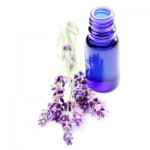
The use of essential oils (extracted from herbs, flowers, resin, woods, and roots) in body and skin care treatments is known as aromatherapy. Used as a healing technique for thousands of years by the Egyptians, Greeks, and Romans, essential oils aid in relaxation, improve circulation, and help the healing of wounds. Aromatherapy diffusers are utilized to fill the massage room with the scent of the oils. Specific essential oils are blended by the aromatherapist and added to a carrier oil, such as almond oil, to be used during the massage. Each oil has its own unique characteristics and benefits.
Sports Massage

Integrative Method
There are other approaches and combinations of approaches that do not fit neatly into any of the above categories. Many massage therapists and bodyworkers use combinations of approaches that could be called integrative massage or integrative bodywork.
References:
MTBOK – Massage Therapy Body of Knowledge (May 15, 2010), Sponsored under the joint stewardship of the following organizations: American Massage Therapy Association (AMTA) Associated Bodywork and Massage Professionals (ABMP) Federation of State Massage Therapy Boards (FSMTB) Massage Therapy Foundation (MTF) National Certification Board for Therapeutic Massage and Bodywork (NCBTMB)

